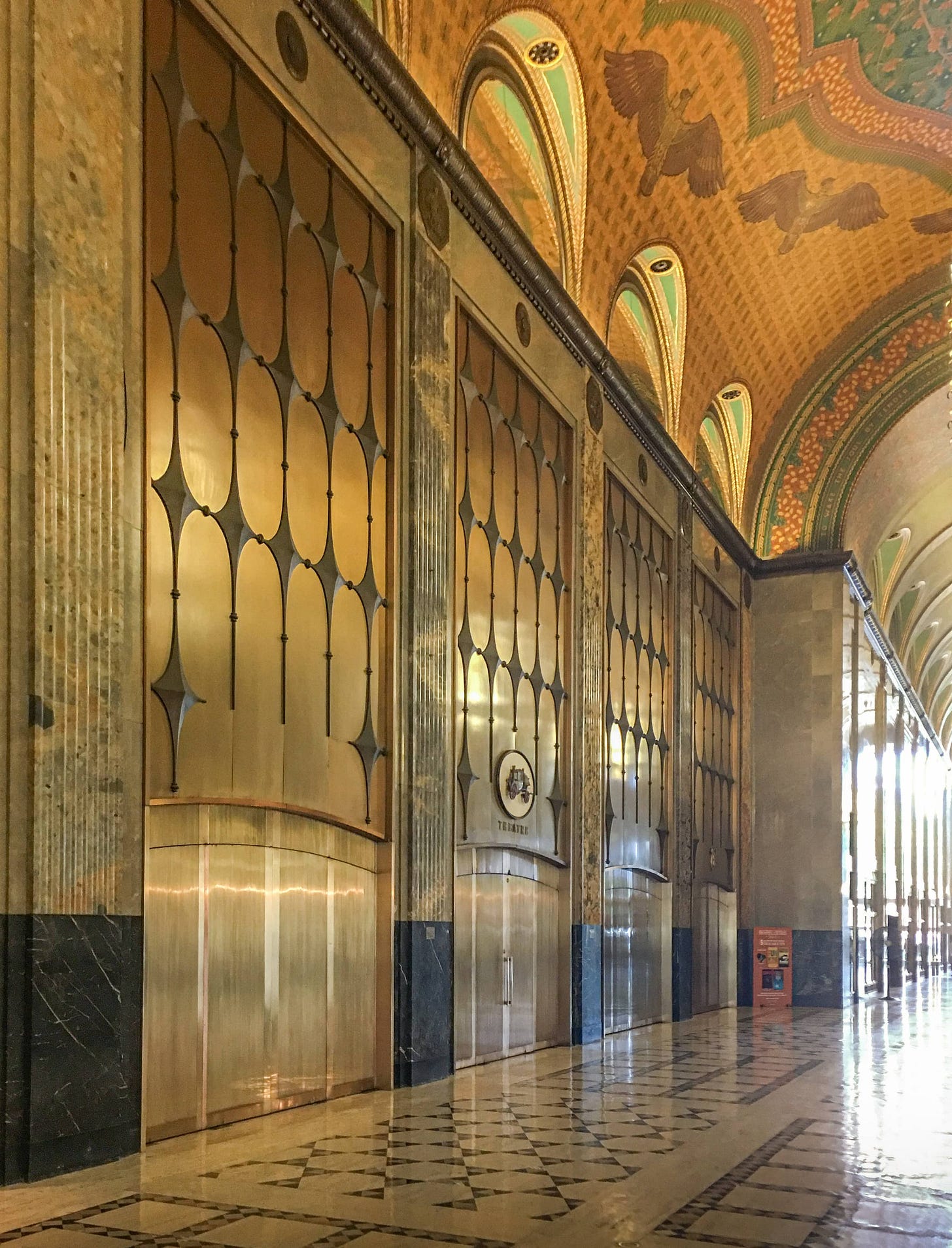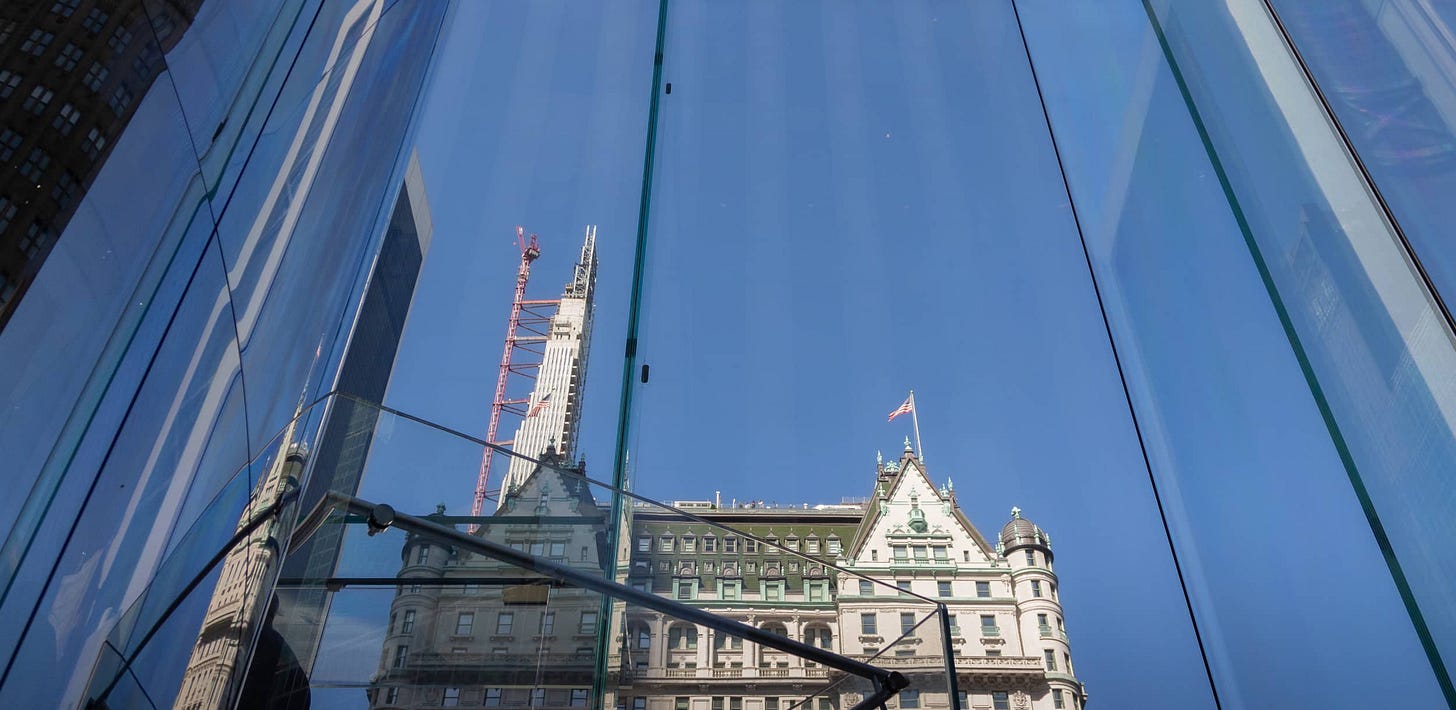The most beautiful building in the world
Can landmark Apple Stores stand the test of time?
At the corner of West Grand Boulevard and 2nd Avenue in Detroit is an immaculate, 30-story Art Deco skyscraper that was commissioned to be “the most beautiful building in the world.” Every year, countless people walk its marble halls and gaze up at hand-painted frescoes lining the vaulted lobby.
Most visitors to Detroit’s Fisher Builder did not arrive in a car with a “Body by Fisher.” Most under the age of 30 have never even seen a vehicle manufactured by what was once one of the top body-makers in the US. The most enduring product Fisher Body produced wasn’t an automobile at all. It was a landmark.
In the same fashion, there will come a day, hopefully long after you and I are gone, when the majority of people on Fifth Avenue in Manhattan will never have seen an Apple product outside of MoMA. When they glance over at the foot of the GM Building, will they know that plaza once belonged to the most important technology company on earth? Will the cube still exist to delight visitors?
Historic restorations aside, Apple has now constructed around two dozen stores that I think most people would consider landmark pieces of architecture. Beyond their value as retail spaces and community hubs, landmark stores significantly contribute to the architectural fabric of the neighborhoods they’re located in. Put simply: A city is objectively improved by the mere existence of the building, irrespective of its use or ownership.
Building these stores was a long-term strategy akin to the construction of Apple Park. Apple isn’t going to continuously hop up and down Chicago’s North Michigan Avenue or Singapore’s Marina Bay as tenant leases expire. But what if they needed to leave?
Apple today is a model urban camper: they leave no trace. When a store moves, it is stripped of all proprietary fixtures. Windows may be blocked in and glass staircases disassembled. There will be never be a /r/NotFoolingAnybody for Apple Stores.
Early locations didn’t have as many unique elements, but today’s stores are essentially 100% custom. If Apple left Walnut Creek, California, for instance, they could conceivably choose to totally demolish Apple Broadway Plaza. It’s worth considering if some of today’s landmark designs might actually be more endangered than treasured historic buildings.
So far I’ve been speaking in the present, but an Apple that can no longer profitably operate retail stores or that is forced to vacate its most endearing buildings would point to a future, compromised Apple with a different set of values. In one imagined future, a cash-strapped Apple could slowly disfigure its own landmarks, replacing expensive glass and fixtures with lower quality components as maintenance costs on older structures soar. Complete redevelopment might suddenly become palatable to a city looking to breathe new life into a tired space.
In another hypothetical future, an Apple no longer protective of its brand image could simply clear the tables and hit the lights. New retailers could swoop in, or, through a convoluted series of events spread across several decades, a few glowing Apple logos could join the ranks of Vegas Vic and stubbornly persist long enough to become novelties from a forgotten time.
When Apple restored D.C.’s Carnegie Library, a small logo was added to both sides of the main entrance. Apple told me that these signs were created from new pieces of marble and attached to the original facade with the intent of being removed when the torch is passed to a new building steward. It’s a beautiful succession plan that can scale from historic buildings to new construction.
Fisher Body was ultimately a tech company, and tech companies leave behind only their ideas good enough to stand the test of time, because their products certainly will not. One of the greatest ideas in architecture is to create something that will continue to inspire future generations, and Apple finally has a collection of stores it needs to ensure do just that.
Preview session

Last week, New Delhi hosted what Apple called “preview Today at Apple sessions” at the India Art Fair. This is great phrasing, because it clearly implies a full lineup of retail sessions to come without inadvertently announcing India’s first store. We’ve talked about these sessions here several times, but I couldn’t pass up sharing the photo above from Tushar Kanwar, which shows a complete faux Forum built just for the duration of the fair. The black leather cubes are pretty cool!
Featured image
Apple 福岡
Photo via @911racer.




